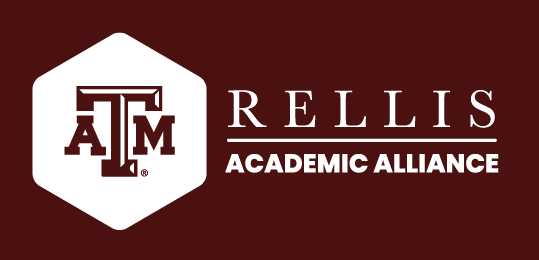Bachelor of science in electrical engineering
Texas A&M University-Texarkana
Create Your Career
If you want to be at the forefront of new technological developments, start building a career in electrical engineering. The Texas A&M University-Texarkana Electrical Engineering program covers a broad field of study, including control systems, computer systems, networks, telecommunications devices, and power systems. An electrical engineer will study and learn the fundamentals of designing an extensive array of devices in a far-reaching spectrum of applications through experiential learning and conduct experiments in several laboratories designed to strengthen theoretical knowledge acquired in regular courses. Job opportunities in this field are expansive and growing by virtue of electrical engineers’ versatility in adapting to new and emerging technologies.
Program Pathway option:
Dual Enrollment
Texas A&M University-Texarkana & Blinn College District
Duration
2-4 Years
Total Credit Hours
120 Hours
Requirements
View or Download Requirements
Careers And Median Salaries
Electrical Engineer
$107,890
Electronics Engineer
$101,780
Engineer
$99,040

WHAT YOU WILL LEARN
- Design of a wide range of electrical and electronic devices facilitating improved living for people around the world, such as cell phones, MP3 players, digital TVs, medical imaging, smart appliances, automobiles, and advanced satellite systems
- Fundamentals of designing an extensive array of devices in a far-reaching spectrum of applications
- Transformation of laboratory prototypes into useful products
Faculty Spotlight
electrical engineering
Dr. Farraj has a PhD in electrical engineering from Texas A&M University. His research focuses on preventing attacks on smart grid systems and maintaining data integrity.FAQ
Electrical Engineer, Software Engineer, Electronics Engineer
Fundamentals of Power Systems, Embedded Systems, Power Systems Analysis & Control
Texas A&M-RELLIS offers a free career assessment to help determine your career interests and a major to match. Visit Vita Navis to learn more.
Free Access Code: TAMUSrellis-ExploreNS
| Scholarship Amount | GPA Requirement | Enrollment Requirement | Additional Criteria | |
|---|---|---|---|---|
| New Transfer Students | $2,000 Yearly | 2.75 College GPA | 12+ hours (consortium hours with Blinn included) | All new admits meeting this criteria will qualify |
| New Transfer Students | $1,000-$1,400 | 2.75 GPA | 6 hours=$1,000 9 hours=$1,400 (consortium hours with Blinn included) | All new admits meeting this criteria will qualify |
| Continuing Scholarship Students | $2,000 Yearly | 2.75 GPA | 12+ hours (consortium hours with Blinn included) | Must successfully complete 30 hours per academic year (fall/spring.summer) |
| Continuing Scholarship Students | $1,000-$1,400 | 2.75 GPA | 6 hours=$1,000 9 hours=$1,400 (consortium hours with Blinn included) | Must successfully complete as many hours as attempted per academic year (fall/spring.summer) |
This program is accredited by the Southern Association of Colleges and Schools Commission on Colleges (SACSCOC).
According to the U.S. Bureau of Labor Statistics, employment of electrical and electronics engineers is projected to grow 3 percent from 2021 to 2031, slower than the average for all occupations.
Book an appointment here: Microsoft Bookings
Click here to apply now.
Create Your Career
If you want to be on the forefront of new technological developments, start building a career in electrical engineering. The Texas A&M University-Texarkana Electrical Engineering program covers a broad field of study, including control systems, computer systems, networks, telecommunications devices, and power systems. An electrical engineer will study and learn the fundamentals of designing an extensive array of devices in a far-reaching spectrum of applications through experiential learning and conduct experiments in several laboratories designed to strengthen theoretical knowledge acquired in regular courses. Job opportunities in this field are expansive and growing by virtue of electrical engineers’ versatility in adapting to new and emerging technologies.
Program Pathway option:
Associate of Science in Engineering – Electrical
Dual Enrollment
Texas A&M University-Texarkana
Duration
2-4 Years
Total Credit Hours
120 Hours
Requirements
View or Download Requirements
Careers And Median Salaries
electrical engineer
$107,890
electronics engineer
$101,780

WHAT YOU WILL LEARN
- Design of a wide range of electrical and electronic devices facilitating improved living for people around the world, such as cell phones, MP3 players, digital TVs, medical imaging, smart appliances, automobiles, and advanced satellite systems
- Fundamentals of designing an extensive array of devices in a far-reaching spectrum of applications
- Transformation of laboratory prototypes into useful products
Faculty Spotlight

Abdallah farraj, phd
Dr. Farraj has a PhD in electrical engineering from Texas A&M University. His research focuses on preventing attacks on smart grid systems and maintaining data integrity.
electrical engineering
Related Degree Programs
FAQ
Electrical Engineer, Software Engineer, Electronics Engineer
Fundamentals of Power Systems, Embedded Systems, Power Systems Analysis & Control
Texas A&M-RELLIS offers a free career assessment to help determine your career interests and a major to match. Visit Vita Navis to learn more.
Free Access Code: TAMUSrellis-ExploreNS
| Scholarship Amount | GPA Requirement | Enrollment Requirement | Additional Criteria | |
|---|---|---|---|---|
| New Transfer Students | $2,000 Yearly | 2.75 College GPA | 12+ hours (consortium hours with Blinn included) | All new admits meeting this criteria will qualify |
| New Transfer Students | $1,000-$1,400 | 2.75 GPA | 6 hours=$1,000 9 hours=$1,400 (consortium hours with Blinn included) | All new admits meeting this criteria will qualify |
| Continuing Scholarship Students | $2,000 Yearly | 2.75 GPA | 12+ hours (consortium hours with Blinn included) | Must successfully complete 30 hours per academic year (fall/spring.summer) |
| Continuing Scholarship Students | $1,000-$1,400 | 2.75 GPA | 6 hours=$1,000 9 hours=$1,400 (consortium hours with Blinn included) | Must successfully complete as many hours as attempted per academic year (fall/spring.summer) |
This program is accredited by the Southern Association of Colleges and Schools Commission on Colleges (SACSCOC) and the Accreditation Board of Engineering and Technology (ABET).
According to the U.S. Bureau of Labor Statistics, employment of electrical and electronics engineers is projected to grow 3 percent from 2021 to 2031, slower than the average for all occupations.
Book an appointment with us at: Microsoft Bookings
Click here to apply now.
TALK WITH A RECRUITER
For more information about the application process or your degree plan, contact a recruiter to help make your academic journey the best it can be!
START BUILDING YOUR FUTURE
We’re here to help! If you have questions about the application process, a specific degree program, or anything else, simply fill out the form and we’ll get back to you as soon as possible.
START BUILDING YOUR FUTURE
We’re here to help! If you have questions about the application process, a specific degree program, or anything else, simply fill out the form and we’ll get back to you as soon as possible.



